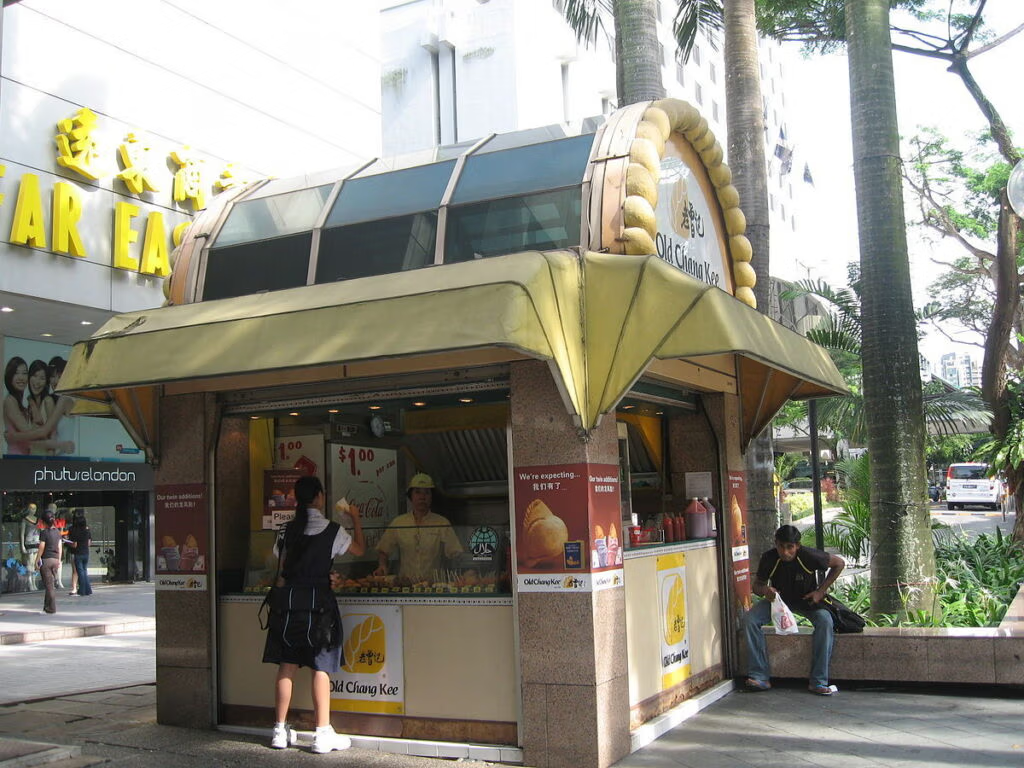From Singapore to Southeast Asia: Singaporean F&B Brands and the Overseas Expansion Imperative

Singaporean F&B brands overseas are not something new.
The industry has long been a hub of culinary innovation. In the early 2010s, the sector benefited from relatively manageable rental rates, an enthusiastic consumer base, and a favorable environment for new dining concepts. However, over the past decade, rising costs, tighter labor regulations, and a saturated market have pushed local operators to look beyond Singapore for growth.
Rising Challenges in the Local Market
With the recent influx of Singaporean F&B Brands closing stores in retail malls, it is not a secret anymore that operating restaurants, bubble tea stores, and similar shops in Singapore has become increasingly costly:
- Rental Costs: Commercial rental prices in Singapore have reached unprecedented levels, significantly impacting F&B establishments. For instance, in 2024, median shophouse rents in areas like Siglap soared to S$7,350 per month, marking a 57% increase from previous years and pricing out long-standing businesses. Additionally, in 2025, reports indicate that prime location rents have surged, with some landlords receiving offers up to S$45 per square foot from Chinese brands, compared to S$36–S$38 from local tenants.
- Labor Costs: Labor costs in Singapore have been on the rise, with the overall unit labor cost increasing by 1.2% in 2024, driven by a 4% rise in total labor costs per worker Business Times. While real wages grew by 3.2% in 2024, fewer firms are planning wage increases in 2025, with only 22% indicating plans to raise wages, down from 32% in December 2024.
- Operational Expenses: The F&B sector has witnessed a significant increase in operational costs, including higher prices for ingredients, utilities, and rent. In 2024, over 3,000 F&B outlets closed, the highest number in two decades, attributed to rising operational costs, higher overseas spending, and increasing prices, along with weaker local demand.
Furthermore, in 2025, the average number of monthly food and beverage closures has jumped to 307, up from 254 in 2024, indicating a continued strain on the industry. These trends have made international expansion an appealing option for ambitious Singaporean F&B brands.
BreadTalk: A Case Study in Overseas Expansion
- Early Expansion: Beginning in the early 2000s, BreadTalk entered the Indonesian market, opening its first outlet in Mal Kelapa Gading 3 on March 28, 2003. By 2012, the brand had expanded to 55 outlets across major cities such as Jakarta, Bandung, Surabaya, Bali, Makassar, Manado, Pekanbaru, Yogyakarta, Solo, Palembang, Batam, and Medan. The brand’s innovative approach to bakery products, including its signature meat floss buns and chocolate croissants, resonated with Indonesian consumers, establishing BreadTalk as a pioneer in contemporary bakery offerings in the region.
- Indonesia Evolution: In November 2022, the Johnny Andrean Group, which had operated BreadTalk in Indonesia, transitioned the stores to MAKO Cake & Bakery. While MAKO retained popular products like floss bread, it adopted a Japanese-inspired boutique concept, allowing the group to maintain market presence while navigating franchise and operational constraints.
- Global Brand Refresh: In 2025, BreadTalk Group in Singapore partnered with brand consultancy Anak to lead a comprehensive global brand refresh. This collaboration aims to revitalize BreadTalk’s brand platform and visual identity, enhancing the customer experience and distinguishing the brand in the competitive bakery sector. The rebrand coincides with BreadTalk’s 25th anniversary and supports its expansion into new markets across Southeast Asia, China, and the Middle East.
Old Chang Kee: A Case Study in Overseas Expansion
- Brand Overview: Old Chang Kee, the Singaporean curry puff chain, was founded in 1956 near Rex Cinema and has grown into a household name with over 80 outlets across Singapore.
- Menu Adaptation: In Indonesia, some outlets feature a Korean-inspired menu including spicy chicken, tteokbokki, and oden—items not available in Singapore. This localized approach complements their core Singaporean offerings, allowing the brand to appeal to local preferences while maintaining its identity.
- Operational Support: The expansion strategy includes establishing factories and distribution support in Australia, Indonesia, Malaysia, and the United Kingdom to ensure consistent product quality and supply for international markets.
Sarnies: Finding the Right Market Abroad
- Brand Overview: Sarnies, a Singapore-based all-day brunch café, was founded by Benjamin Lee and Eric Chan in 2011 on Telok Ayer Street. It quickly became a hotspot in Singapore’s burgeoning café scene, catering to office workers and weekend crowds in the CBD.
- Expansion Motivation: By 2015, rising rental costs, thinning margins, and tightening labor regulations prompted the founders to explore overseas markets. After considering Manila and Malaysia, they identified Bangkok as the ideal location.
- Entry Strategy: A consulting project in 2016 introduced them to Bangkok’s vibrant café culture. They started with a small coffee bar in a temporary shipping container, later moving into a heritage building in the city’s old town to open a fully-fledged brunch café.
- International Footprint: Today, Sarnies operates two outlets in Singapore and eight across Bangkok, each tailored to the neighborhood’s unique customer base.
- Menu Adaptation: Menu adjustments were necessary to cater to Bangkok’s diverse clientele, including locals, expatriates, returnees, and tourists. “The Thais prefer something a bit more interesting … If we were to take the Sarnies in Telok Ayer and plonk it somewhere in Bangkok right now, it probably won’t be received as well,” said co-founder Eric Chan.
- Key Lesson: Sarnies’ experience highlights the importance of local adaptation and understanding consumer behavior, demonstrating that international expansion requires more than simply replicating the home-market model.
Lessons for Other F&B Brands
- Understanding Local Preferences: Adapting products and store concepts to local tastes is essential. In markets like Indonesia, Malaysia, and Thailand, this may include adjusting flavors, menu offerings, and interior design to suit local expectations, as well as complying with cultural requirements such as halal certification to operate in malls and food courts.
- Strategic Partnerships: Collaborating with experienced and credible local operators is key. Partnering with the right teams—who understand the market, regulations, and consumer behavior—can significantly improve the chances of a successful expansion.
- Brand Evolution: Staying relevant at home while innovating abroad strengthens global presence. Expanding successfully often involves refining brand aesthetics, product presentation, and marketing approaches to match the local palate and preferences, while preserving the brand’s core identity.
Conclusion
The challenges of Singapore’s F&B market are real, but the journeys of BreadTalk, Old Chang Kee, and Sarnies show that with strategic planning, international expansion is not only feasible but can drive long-term growth. For Singaporean brands, Southeast Asia and beyond offer accessible, receptive, and high-potential markets—making international expansion a natural next step for ambitious F&B operators.
At Vintage Management, we provide consulting services to help business owners, including F&B owners who feel inspired to expand their restaurants or eateries overseas. If you are one of them, please contact us for a private decision: https://seeandconnectsg.com/contact/
For more articles, click here: https://seeandconnectsg.com/news/
Credits:
Old Chang Kee food stall., by Terence Ong, licensed under CC BY-SA 3.0.”
SZ 深圳 Shenzhen 龍華區 Longhua District 景龍建設路 Jinglong Jianshe Road 壹方天地 Uniwalk Mall in September 2023, by GHEIMKRjuhp HUA, licensed under CC BY-SA 4.0.
Recent Posts
- Impact of Spain’s Pork Import Suspension and the Emerging Potential of Alternative Meat
- Case Study on Chatterbox’s Expansion to Japan: How Local Expertise Attracts Global Brands
- Singapore Employment Pass Update: COMPASS “20-Point” Universities for Overseas Professionals
- How Singapore’s Food-Stockpile Strategy Is Evolving
- Learn from Orchard Road Christmas Light-up








